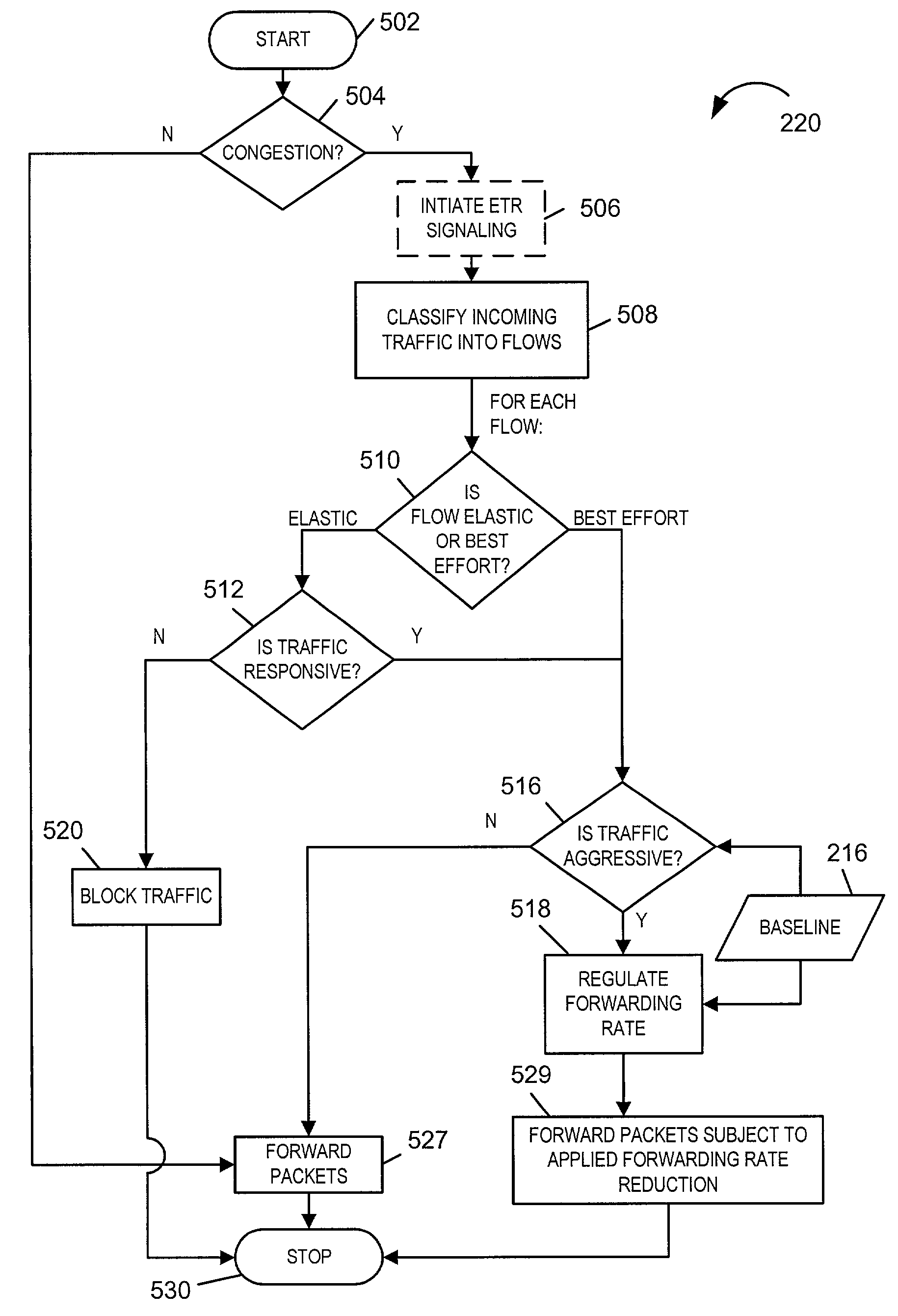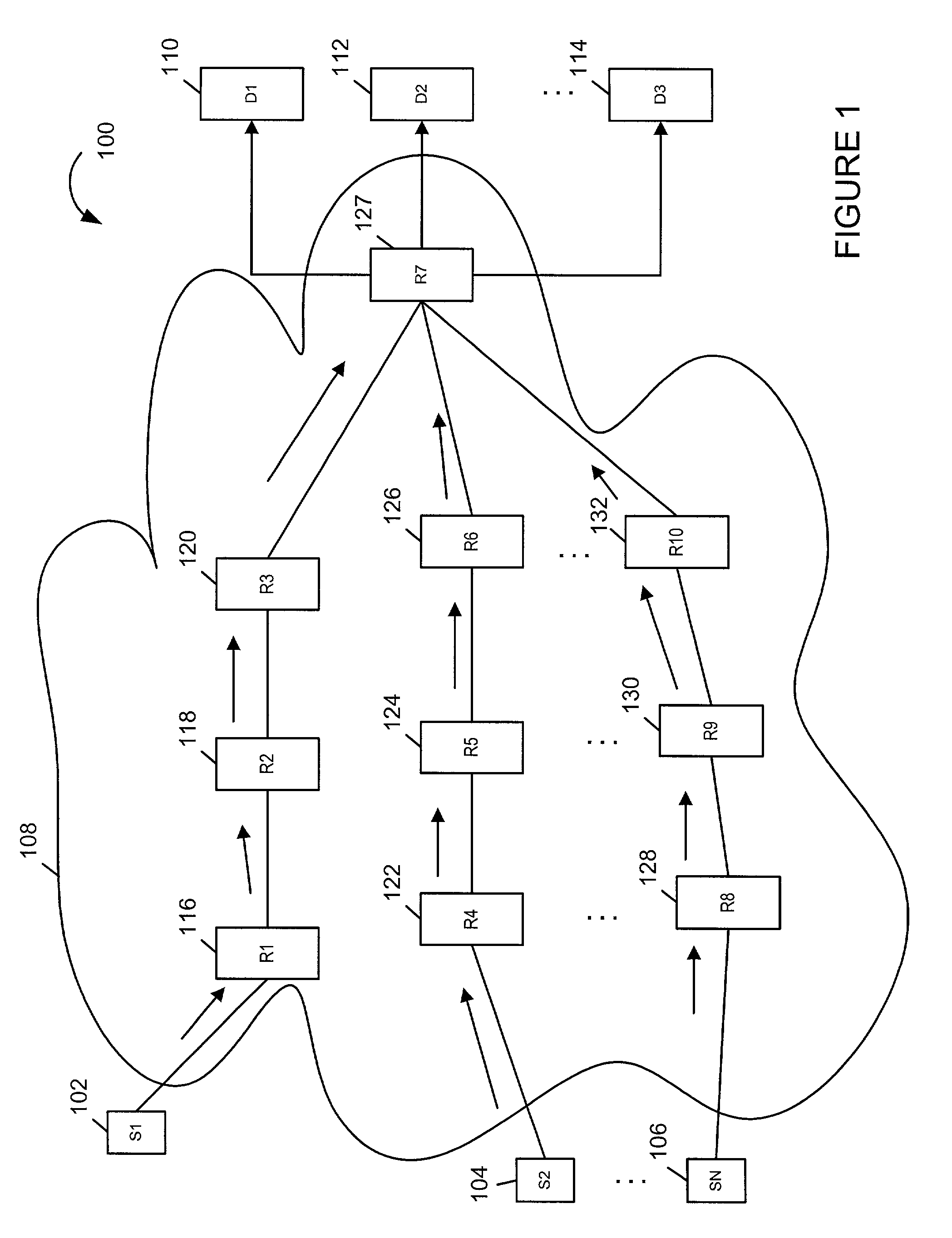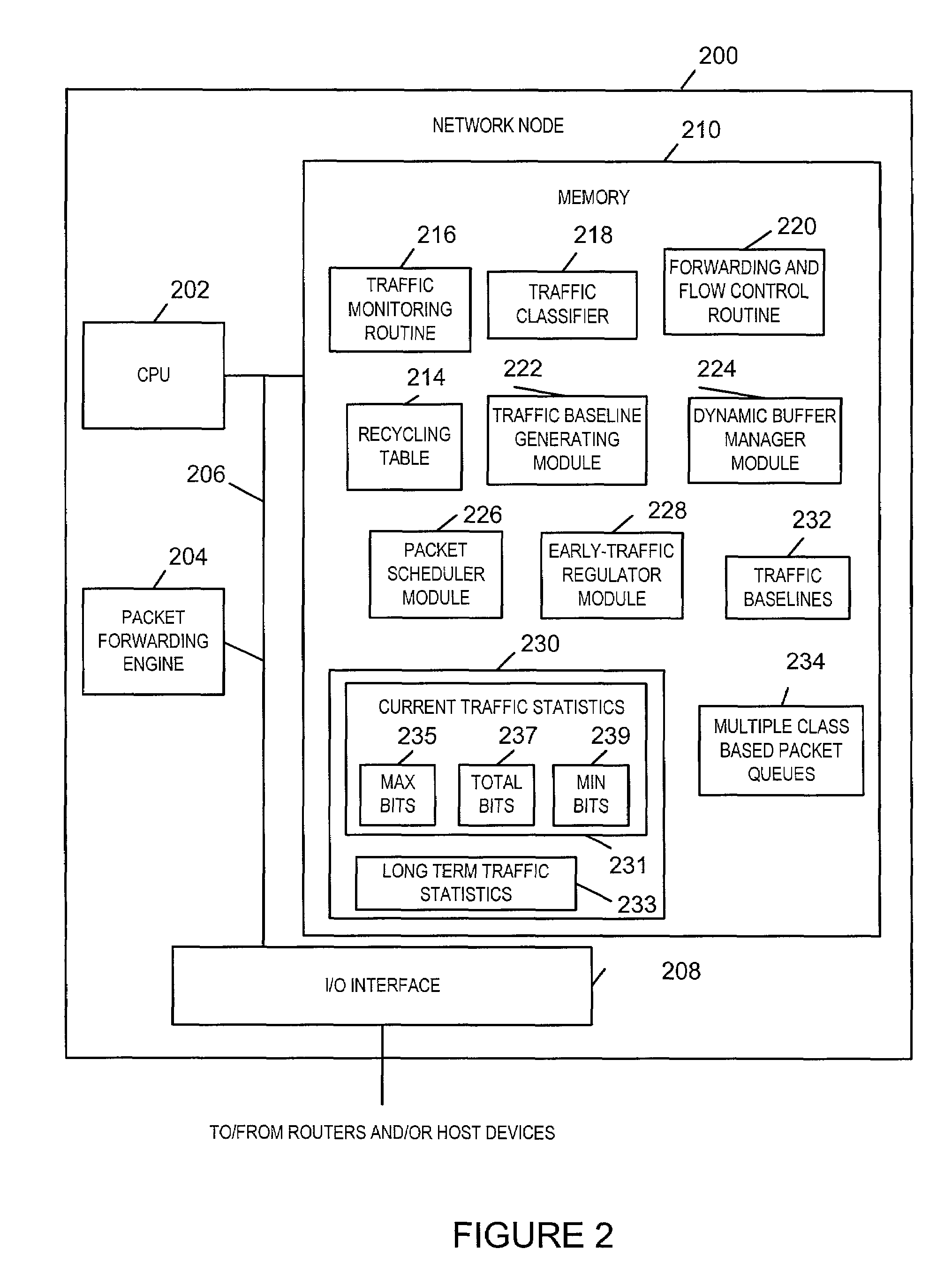Anti-flooding flow-control methods and apparatus
a flow control and flow control technology, applied in the field of communication systems, can solve problems such as congestion at certain nodes, preventing legitimate communications, and traffic used in n-dos attacks can be considered malicious, so as to reduce the flow of traffi
- Summary
- Abstract
- Description
- Claims
- Application Information
AI Technical Summary
Benefits of technology
Problems solved by technology
Method used
Image
Examples
Embodiment Construction
[0033]The present invention is directed to congestion control methods and apparatus. The methods and apparatus of the present invention are well suited for defending against network Denial-of-Service (N-DoS) attacks.
[0034]FIG. 1 illustrates a communications system 100 implemented in accordance with the present invention. The system 100 comprises a plurality of sources 102, 104, 106, an internet 108 and a plurality of destination nodes 110, 112, 114. The internet 108 may be a corporate internet or the world wide Internet. The internet 108 comprises a plurality of nodes R1 through R10116, 118, 120, 122, 124, 126, 127, 128, 130, 132 connected together as shown in FIG. 1 by the use of solid lines. Each of the nodes may be, e.g., a router or a switch. Arrows are used in FIG. 1 to indicate the flow of packets, e.g., between source devices S1, S2, . . . , SN, 102, 104, 106 and destination device 112. While FIG. 1 shows flows of packets to destination device D2112 from sources S1, S2, . . ....
PUM
 Login to View More
Login to View More Abstract
Description
Claims
Application Information
 Login to View More
Login to View More - R&D
- Intellectual Property
- Life Sciences
- Materials
- Tech Scout
- Unparalleled Data Quality
- Higher Quality Content
- 60% Fewer Hallucinations
Browse by: Latest US Patents, China's latest patents, Technical Efficacy Thesaurus, Application Domain, Technology Topic, Popular Technical Reports.
© 2025 PatSnap. All rights reserved.Legal|Privacy policy|Modern Slavery Act Transparency Statement|Sitemap|About US| Contact US: help@patsnap.com



